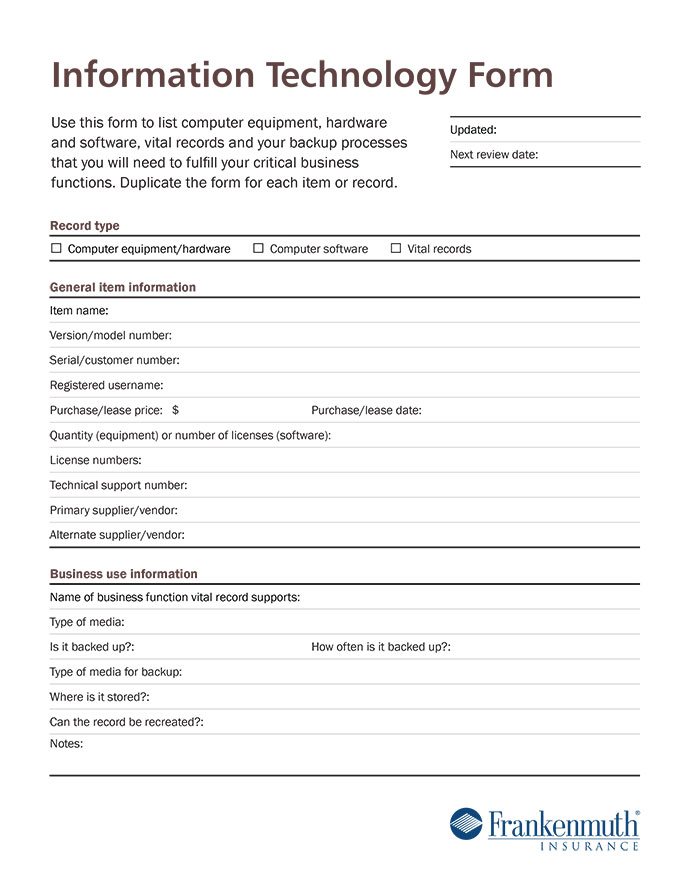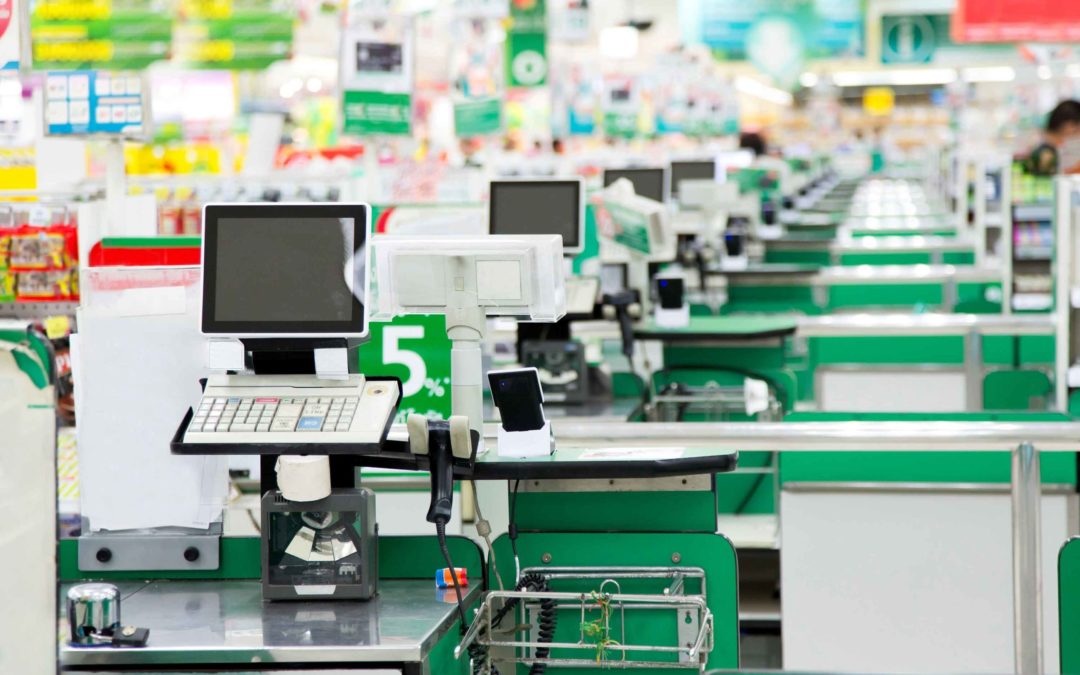Almost all businesses depend on access to computers and the internet, which makes them critical to include in your disaster preparedness plan. But just how well do you know your information technology?
If your company uses technology to conduct business, communicate with customers or retrieve important information, find out how to keep yourself covered.
How to protect your hardware
- If you have advance notice of a disaster (such as a severe storm), shut down and unplug all computer hardware to avoid serious damage due to power fluctuations.
- Consider elevating equipment in case of flooding or moving it offsite.
- Have your employees take their laptops home each day so they can work offsite.
- Make arrangements with IT vendors to replace damaged hardware and software, and/or to set up hardware and software at a recovery location.
- Request written estimates for rental or purchase of equipment, shipping costs and delivery times.
How to protect your data and software
- Keep a backup copy of your computer’s operating system, boot files, critical software and operations manuals.
- Determine which data and records are vital to perform critical business functions. Back up this data on one or more types of media. Some examples of critical data include:
- Payroll files
- Tax information
- Accounting files
- Production records
- Computer and internet logins and passwords
- Keep one backup copy of your data onsite for smaller emergencies (e.g., failed hard drive). Keep a second copy in an offsite location for larger disasters.
- When possible, keep hard copies of critical files offsite.
Feeling like your brain is on IT overload? Don’t worry. For your convenience, we’ve created a printable IT form to help you know your information technology. Use it to list computer equipment, hardware and software, vital records and any backup processes you need to fulfill your critical business functions.

Download the printable IT form now, then duplicate it for each item or record. Be sure to add a new form when new hardware or software is acquired. (To make sure you stay on top of this, we recommend reviewing your forms every six months.)
Frankly speaking, the best businesses are prepared for the worst, and our Disaster Preparedness Guide has you covered.


